This is the second in a series of posts on the Hasselblad X2D 100C camera and the XCD lenses. You will be able to find all the posts in this series by looking at the righthand column on this page and finding the Category “X2D”.
I made a series of dark-field images with the X2D at various ISO settings, shutter modes (ES and MS), and raw precision (14 and 16 bit). I analyzed the images, calculated the read noise, and I’ll show you the results. These curves show the engineering dynamic range (EDR), which I’m defining here as full scale divided by the root-mean-square (rms) value of the read noise, using lossless compression. Shutter speed was 1/1000 second. All these tests were done with no lens. I used a body cap to get the dark field. The curves are all done using 2000×2000 pixel crops that have been shifted leftward just far enough to avoid the center column of the sensor, which is sometimes the site of aberrant behavior.
First, with ES and 14-bit precision:
The vertical scale is EDR in stops. The EDR for all four raw channels is plotted. The red channel is number 1. The blue channel is number 4. The green channels are numbers 2 and 3. The flattening of the EDR for ISO 64 and ISO 100 indicates that the high conversion gain mode for the sensor starts at ISO 200.
The results with 16-bit precision are substantially the same:
Here are the EDR advantages of 16-bit over 14-bit precision:
The advantage at 64, 100, and 200 is minimal, and those hat higher ISOs is even less.
The differences between using the electronic shutter and the mechanical shutter in the 38mm lens are even less:
Here’s the spectrum of the dark field noise for one of the green raw planes:
Fs is the sampling frequency of the sensor. fs = 0.5 is the Nyquist frequency. Except for the spike at low frequency, the spectrum is flat.
That’s not true of the blue plane:
The vertical direction shows very mild low-pass filtering.
The same situation obtains as the ISO dial goes higher:
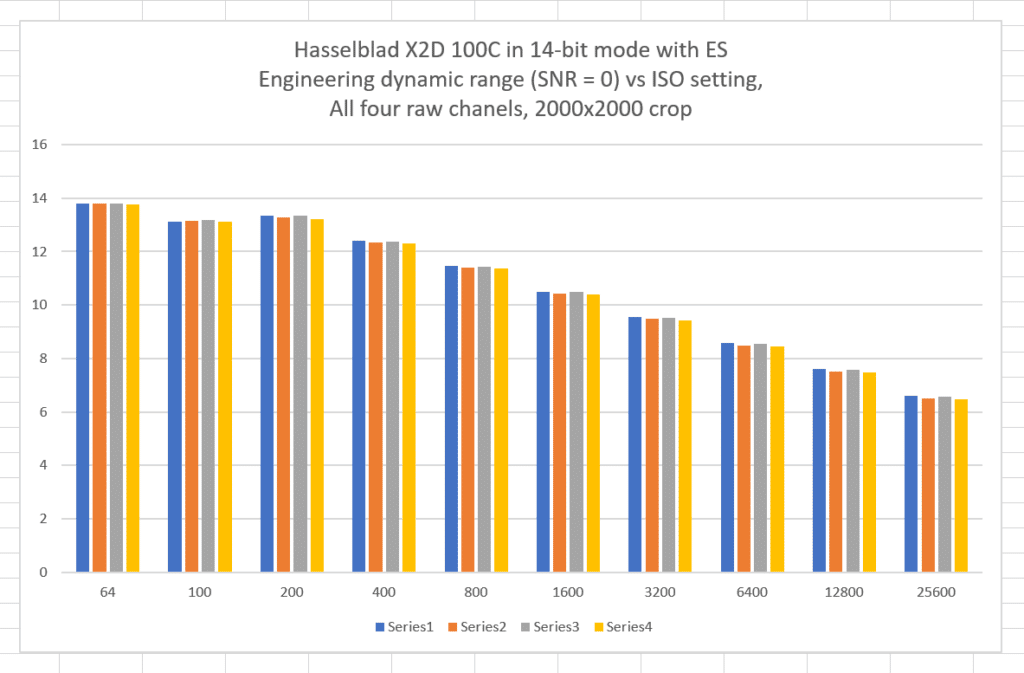
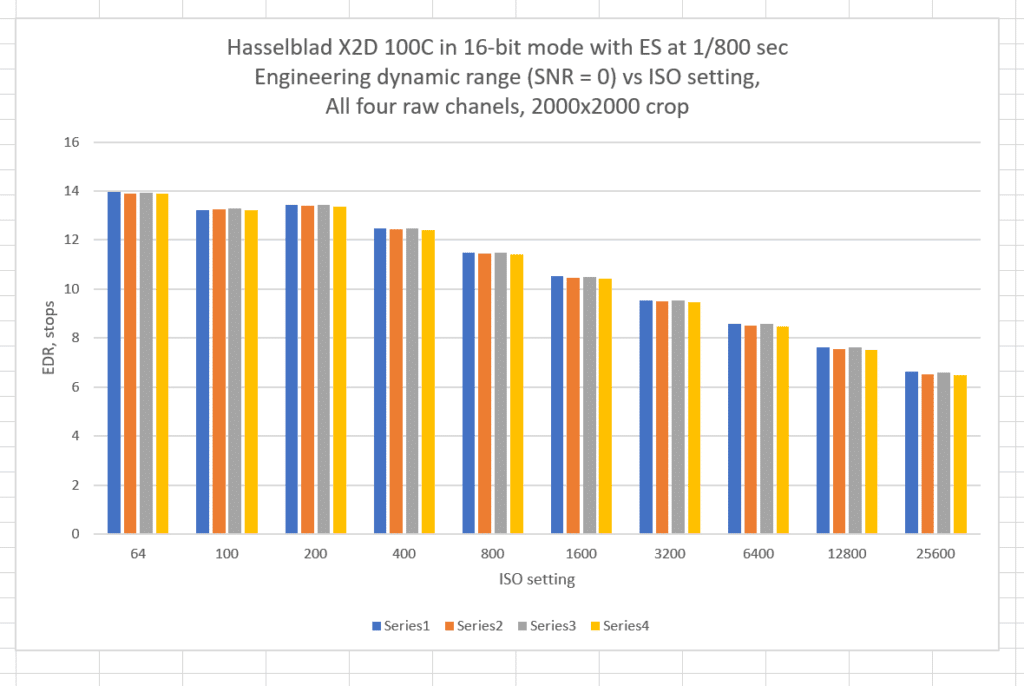
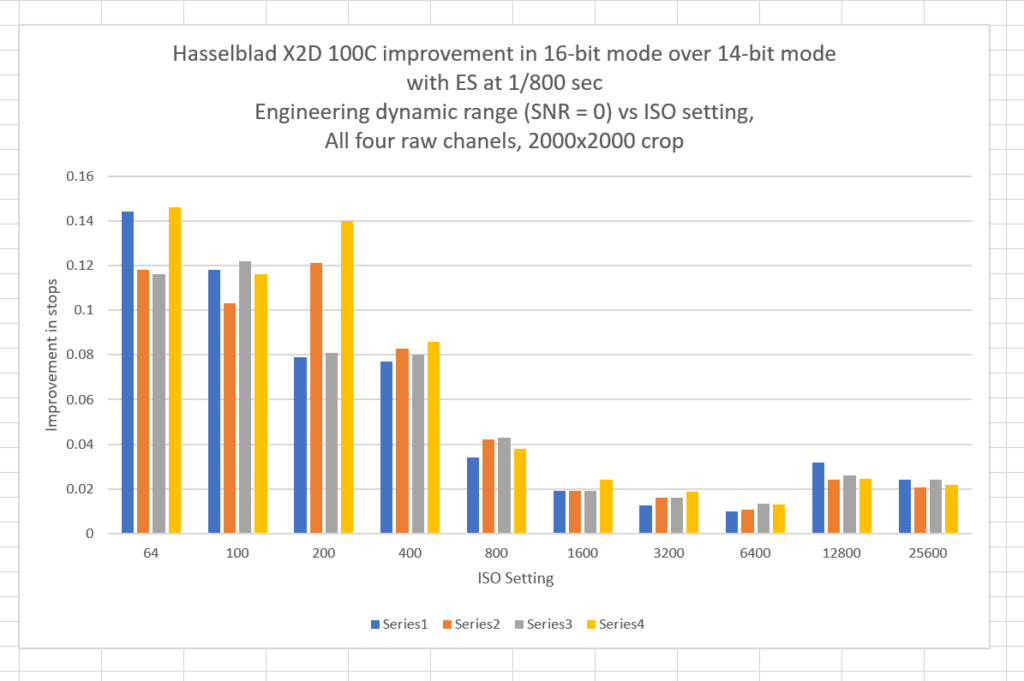
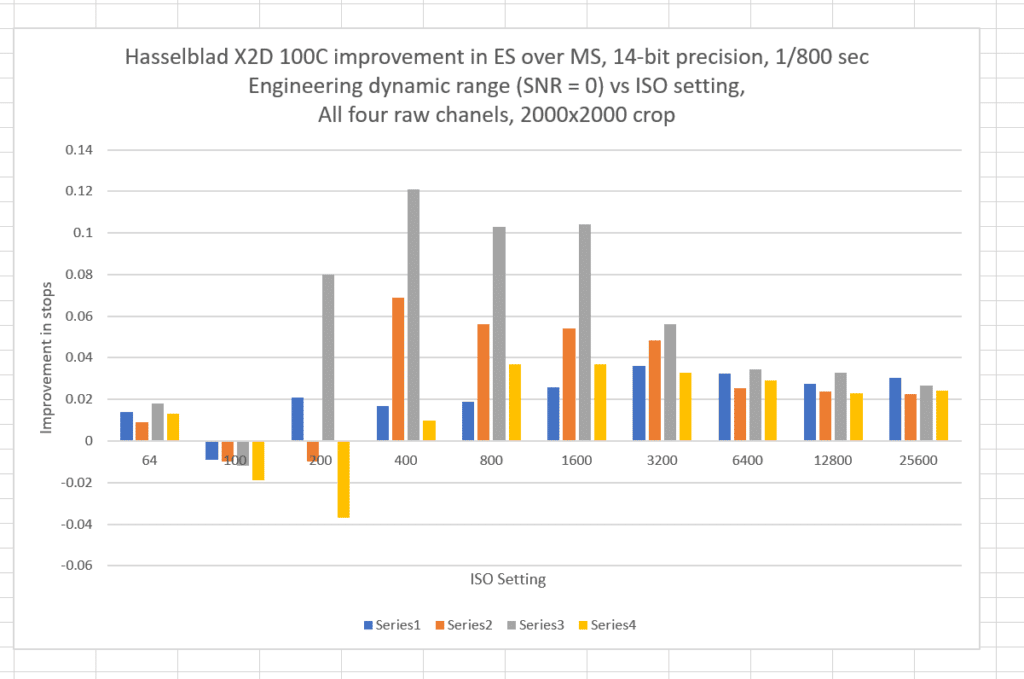
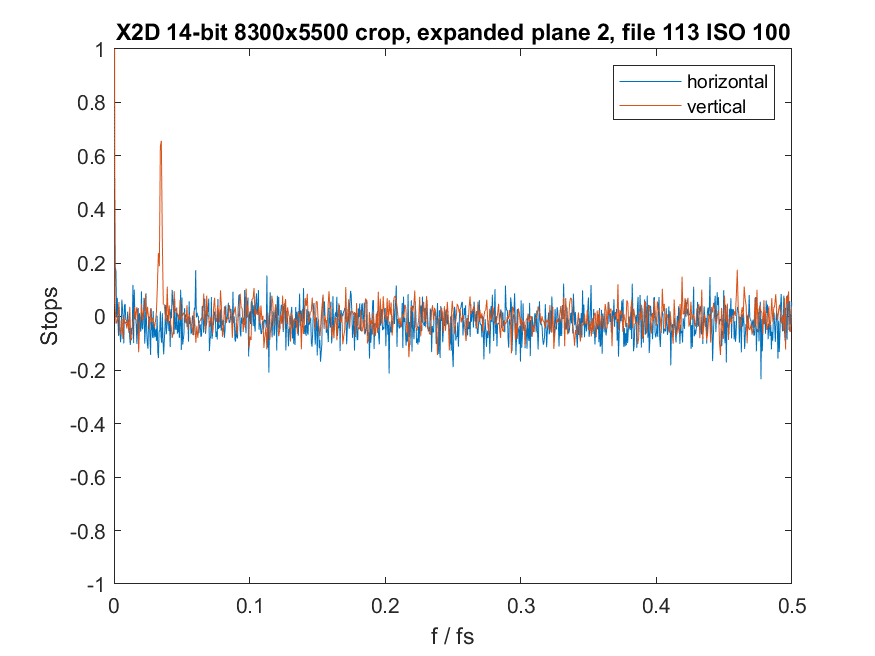
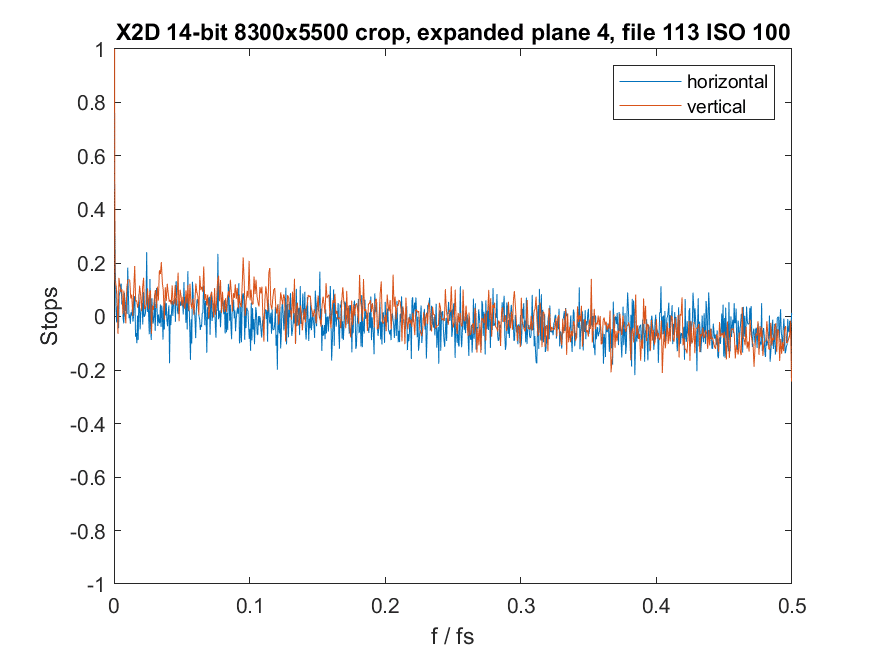
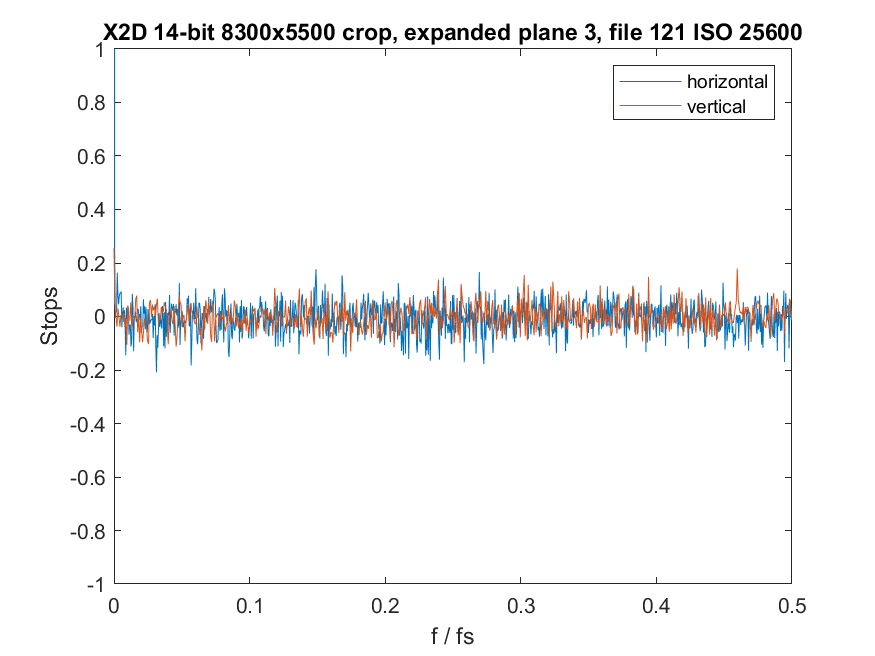
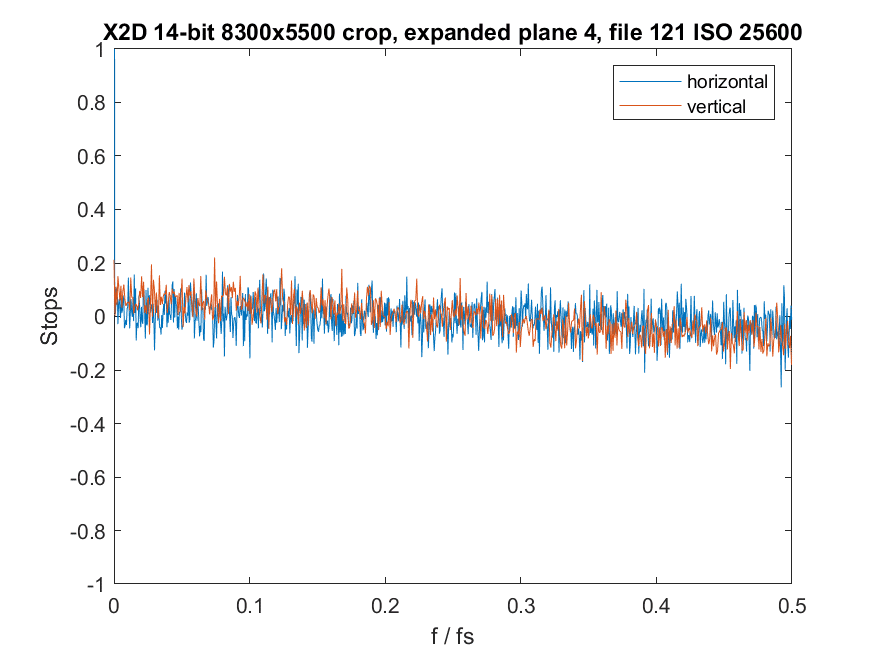
So, it looks like 14 vs 16 bit only barely effects DR, and only at the lowest ISO values.
From what I can tell, you are drawing the conclusion that the high conversion gain is happening at ISO 200, because there is a boost in DR from 100-200, and without a gain boost, that wouldn’t naturally happen.
Why would MS vs ES effect DR? You said it doesn’t in this test, but why test for it?
Could you explain the dark field noise graphs? I don’t understand what I should be looking at.
Some cameras use different analog to digital converter processes for ES and MS.